
Wow. Thanks for the dedication, Bioephemera!
Photo credit: image via Fail Blog (by way of Bioephemera)

"Sierra Club Green Home was developed with a simple mission in mind: to help Americans make their homes more energy efficient, environmentally sustainable and healthy. We do not sell products or services. Instead, we provide great education to help you have a more sustainable home and make it easy for you to find local green businesses."If you don't own the apartment or house that you live in, some of the site's suggestions won't be sensible investments, though you might consider introducing the Green Home ideas to your landlord. But if you're fortunate enough to own your residence, the site offers many terrific resources that will get you rolling on lifestyle "greening" (and, in the long run, saving another kind of green).
"Most modern synthetic cleaning products are based on age-old formulas using natural ingredients....Going back to the original naturally derived ingredients is a way to make cleaning products that work, don’t pollute and save you money. Most are found in your kitchen cupboards. Mix and match with well-chosen and environmentally friendly green cleaning products found in health food stores, and you can easily and simply transform your home into a non-toxic and healthy haven."I'll definitely be taking advantage of the window cleaner and all-purpose spray cleaner recipes.

"The work probes me, reads me, asks me questions, makes demands. If we see and acknowledge this connection between ourselves and works of art, art isn't merely a distraction, it is a means by which we begin to understand ourselves. Marcel Proust wrote, 'In reality, every reader is, while he is reading, the reader of his own self.'"This weekend, I pulled G. Di San Lazzaro's biography of Paul Klee off my bookshelf, hoping to draw some inspiration from reproductions of the artist's paintings and drawings. As I thumbed through the book, however, various passages caught my eye, and I ended up reading much of Lazzaro's account.
-Dr. Alan Jones, Reimagining Christianity
"For Klee art was always cast 'in the image of creation'...The artist rummages in Creation's property box. There is nothing which does not serve him, nothing which does not come into his game - art and its oldest remnants such as inscriptions, mosaics, Assyrian tablets, cracked pottery, imaginary ideograms, graffiti; nature with its various processes and chance effects - its striations, strata and maculations, the slow wear of time which in the thinnest fragment of rock imitates the work of the human hand. The hand, in its turn, Klee said, must be 'the instrument of a distant past.'"Yet, of the many 20th century artists that heroically championed the unconscious and the archaic, Paul Klee is perhaps the only one that your grandmother loves. Why? Because his paintings are colorful and inoffensive and, when not abstract, feature charming hieroglyphs, animals and stick figures.
-Pierre Volboudt, Kandinsky
"Klee's world is [not] grotesque but mystical...For Klee, as he said to me in 1919, art was not there to reproduce the visible but to render visible what lay hidden beyond the visual world. He remained faithful to this doctrine and brought its deep meaning to fruition until, after passing through many intermediary stages, he achieved in his pictorial world...essential beauty."
-Carola Giedion-Walker
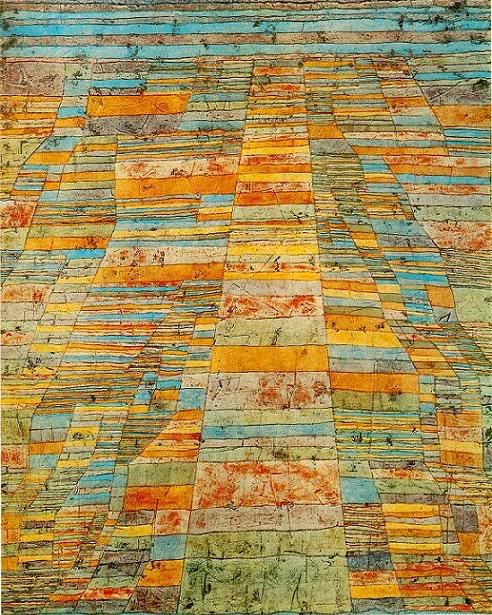
"Art is subjective...and I feel that a viewer's experience and interpretation of an artwork is as informative and vital as the intention and creation of the artist. It's a conversation."In short, the viewer plays a substantiative role in the life of an artwork.
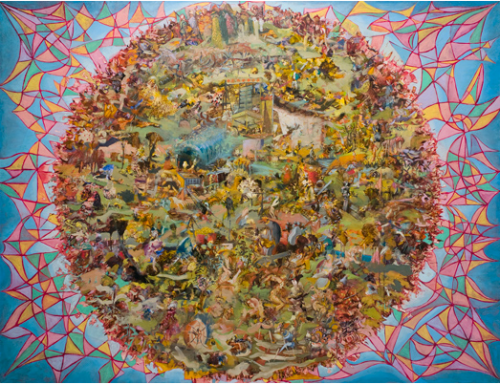
"I want the viewers of my paintings to see history and human behavior at a macro level, by combining a great variety of influences that you can see close-up. Bosch, Brueghel, Persian minatures, memories, literature, history - I want to combine all of these things in my work. When you put all of this in the pot and stir, you create your own mythology."Indeed, Banisadr combines these ingredients to excellent effect. Looking at the paintings, Banisadr's indebtedness to and admiration for the Dutch masters is immediately apparent, but so, too, is a great heave of ideological love and madness.
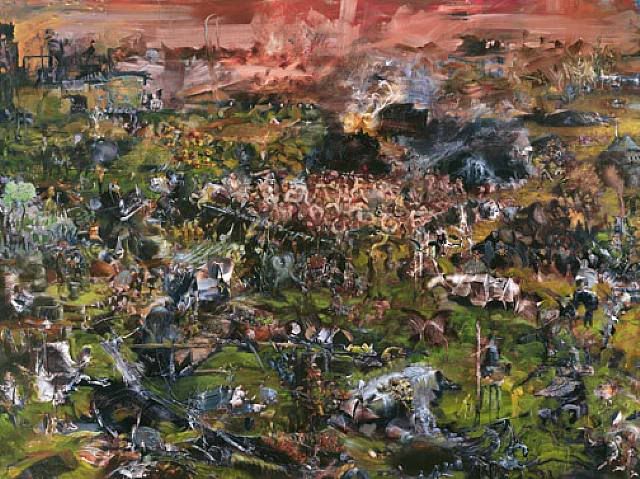
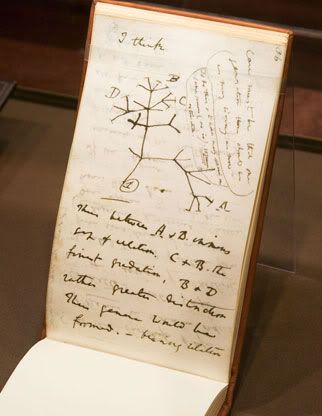

"Joints are and are not parts of the body. They cooperate through opposition, and make a harmony of separate forces. Wholeness arises from distinct particulars; distinct particulars occur in wholeness."I announced last week that biologist, writer and artist Jessica Palmer contributed a short essay about one of my 2008 drawings to SEED Magazine's Culture Section. In her article, "Seeing Antlers, Feeling Dendrites," Palmer asserts that good art acts as a vehicle of consilience.
- Herakleitos, circa 500 B.C.E.
"Basically, I think that good art prompts the viewer to find meaningful connections between things that seem unrelated, to draw parallels that previously went unnoticed. Art can be a springboard to insight. Science, which can so easily become insular and near-sighted, needs that springboard, even if - like a shared birthday - it's just a hook to get the story started.I agree heartily, though I would widen the scope of such "linkages" further.
It's worth noting that Darwin was a great scientist precisely because he could make meticulous, minute observations of a single species - he wrote a whole book about earthworm digestion, for heaven's sake! - while also seeing the grand, universal, far-reaching forces that shape finch beaks, beetle shells, poodles and pigeons. It's not easy to make those linkages, in history or in science; sometimes art, literature, or music can give the roving mind a nudge in the right direction. As Gopnik notes in his book, 'there is no struggle between science and art': both are ways of understanding the world, and their strengths are complementary."
"In the process of compiling over 100 art blog profiles, and starting what will be an ongoing survey of the art blog scene, we accumulated a whole range of questions we wanted to investigate further. As a part of this series, we have explored the extraordinary growth of an art blog with Ruben Natal-San Miguel, from ARTmostfierce, how to produce extraordinary art critique with Catherine Spaeth, and providing extraordinarily cohesive coverage with Christopher Reiger from Hungry Hyaena."The interview with Catherine Speath is of particular interest to me, given her defense of accessible, yet rigorous art writing. She writes,
"I do, however, take very strong objection to what you are referring to as 'dumbing down' when it is relied upon as uncritical fodder for the market. For this reason there is a very important role for the academy and the museum to uphold a place for scholarly research. But I have also seen some atrocious academic writing, produced by galleries especially, that relies upon a history of philosophical thought to dress something up for the market."Ms. Spaeth also discusses the issue of online plagarism, particularly as it relates to bloggers. This issue is very important, and I hope that it will engender more conversation.
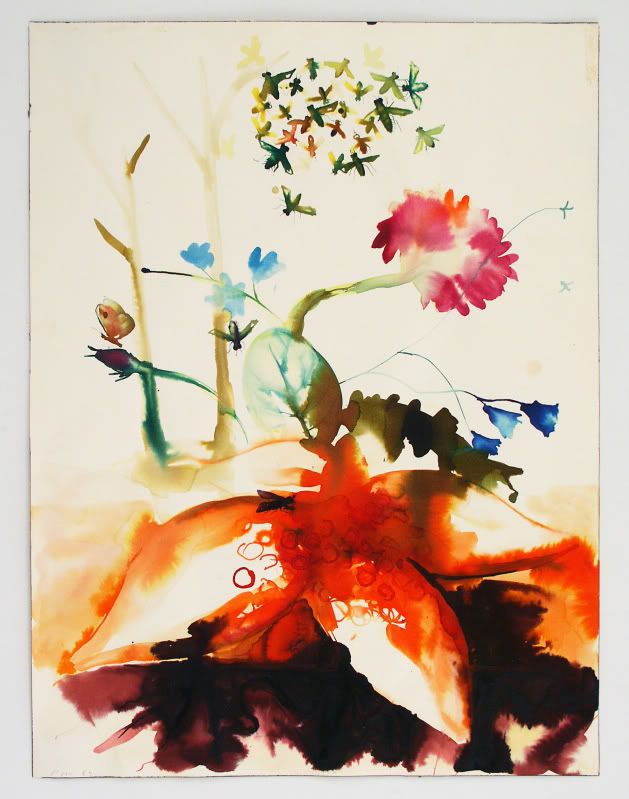
"From 1988-2002 [artists Jason Fox and Alexis Rockman] shared a studio space - divided by an eight-foot high wall - that kept them physically apart while audibly in close range. Over that wall, a flow of ideas, conversations about life and art, as well as a host of objects were lobbed back and forth on a continuous basis."It's a slight concept, but I like the idea; the personality and interests of a studio mate can markedly affect one's work. I imagine the two young artists engaged in happy labor on their respective sides of the studio partition, creative energy and ideas inspiriting the space.
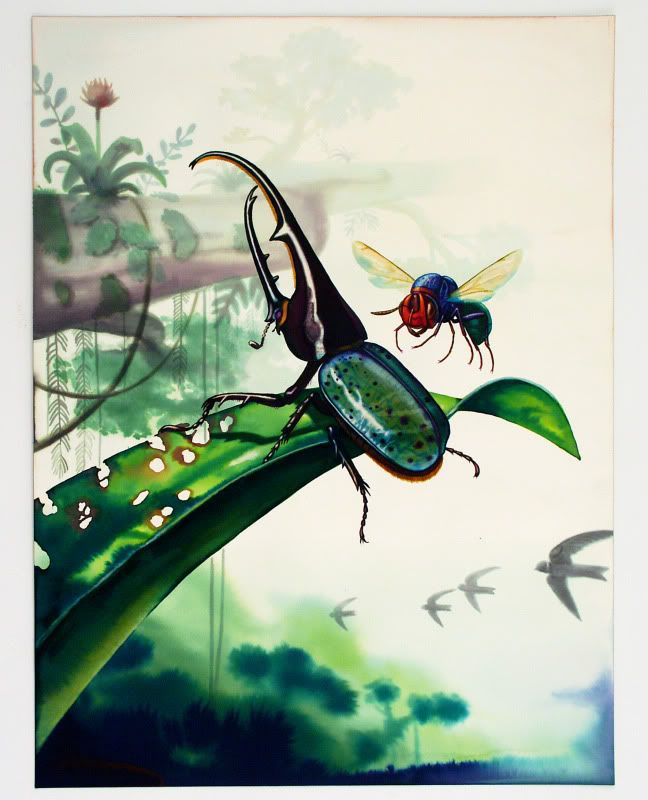


"If this globe is the only heaven we have, I doubt the trip will be a long one. Downward into the seethe of soil and the sea, we landlubbers become marine again.
I believe in continuity through conductivity: that seething underpinnings of life's flash and filigree, its igniting chemistry, may, like fertilizer, appear temporarily dead, but spark across species like the electricity of empathy, or as though paralleling the posthumous alchemy of art.
Gazing out the window, I see nothing but motion, high and low - scudding clouds, swinging leaves, right down to the millipedes (if I step outside) seething in the soil. Death, be not proud. Plant me when I die so that I can seethe with them."

Nature teaches beasts to know their friends.Human beings are exceptional among the social beasts in that our moral and ethical values are forever evolving. Educated, progressive individuals today consider all humans inherently equal, irrespective of race, sex, religion or nationality. Unfortunately, prejudice doesn't die easy, and bitter conflict remains a fact of life. Still, cultural anthropologists note that humanity has with time extended its ethical embrace from family to tribe, tribe to region, region to nation, nation to race, and race to species. In other words, bigoted outliers excepted, humanity is becoming ever more compassionate. It is notable and lamentable, however, that our animal brethren remain largely ignored. Nevertheless, I remain hopeful that humanity will transcend anthropocentrism.
-"Coriolanus" (Act II, Scene I), William Shakespeare
"I don’t want to see it (I prefer my meat in nice little packages in the store freezer), and if it is too disturbing or shocking to the sensibilities of the community, then the community should ask that the exhibit be removed."It comes as no surprise that people don't like to be disturbed or shocked, but the commenter's preference for "meat in nice little packages" is irrelevant; that nicely presented meat comes from a living animal that was killed for human consumption. By buying the packaged meat, the consumer is implicated in the "processing" of the animal. Moreover, if she denies her connection to the animal's life and death, the meat-eater engages in irrational and immoral thinking. Were the omnivores that called for the closing of Abdessemed's SFAI exhibition compelled by shame?